When cooking meat, one of the most important factors affecting the outcome is the temperature. From ensuring it is safe to eat to achieving the perfect texture, meat temperatures can make all the difference. Alongside this complete guide to meat temperatures, I have also put together a meat temperature chart – which you can print off and keep handy for reference!

Why Should You Check Meat Temperatures?
Cooking is super fun, but it can also be dangerous if done incorrectly. For meat, the internal temperature must reach a certain point for it to be safely cooked. If the temperature is too low, bacteria that may have been present on the surface of the meat could still be alive. This bacteria can cause food poisoning – so it is essential to check the temperature of your meat.
I know the thought of bacteria can be offputting, but bacteria are a natural part of life! It is everywhere, and there are also various forms. For example, some bacteria are pathogenic, meaning they can cause illnesses, while some are not. Others are even beneficial, such as those in fermented foods like kimchi and sauerkraut.
So don’t be scared of bacteria – just ensure you take the right precautions when cooking meat, including checking your meat temperatures. Checking the meat temperature is also the best way to prevent overcooking and drying out your meat. And with the right tools, you can easily and accurately measure your meat temperatures in no time.
How Do You Check Meat Temperatures?
Checking the cooked meat temperatures is as simple as using a digital or analog thermometer! Digital thermometers are quick and accurate, while analog thermometers take a bit longer to give you an exact reading.
I personally use the ThermoWorks Thermapen (affiliate link) – it’s an excellent digital thermometer that is quick and easy to use. It is accurate, cordless, and, best of all, super long-lasting.
I have had my Thermapen for well over 8 years now and use it every week! Digital thermometers are not just great for checking meat temperatures but also for making homemade candy and baked goods.
Meat Temperature Chart
Now you know why you should check meat temperatures and how to do it; all you need now is a handy meat temperature chart! This will tell you the internal temperature that your food needs to reach for it to be safe to eat.
My meat temperature chart printable will help you become a master of the grill, oven, or stovetop! Stick it in your favorite cookbook or pop it on your fridge – and when this chart is paired with a digital thermometer, you will always monitor your meat temperatures correctly. I was also sure to include both Fahrenheit and Celsius temperatures on my meat temperature chart.
Click this link to access your new print-ready meat temperature chart!
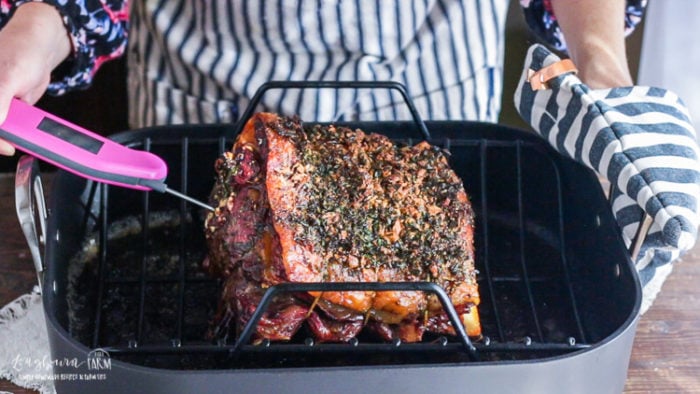
Why Do Some Meats Have Different Temperature Requirements?
As you can see from the above meat temperature chart, not all meat needs to reach the same temperature. This is because each type of meat may have been processed differently. During this processing stage, pathogens can be introduced, so higher temperatures are sometimes necessary to kill any bacteria when cooking.
To break it down for you, here is a list of why some meats have different temperature requirements:
Chicken Temperature
Chicken needs to be fully cooked through and reach a minimum temperature of 165°F to be considered safe for consumption. You may worry about drying out your chicken when cooking it to a higher temperature – but as long as you rest it, your chicken should stay juicy and delicious.
My trick for getting succulent chicken is to remove it from the heat when the chicken temperature is 160°F. I then immediately cover it with foil, leave it for 5-10 minutes, and it is always 165°F when I recheck it. This method removes any risk of under or overcooking whilst ensuring the chicken is nice and juicy.
Beef Temperature
When cooking beef, the type of beef product you use determines the beef temperature. For example, cut beef, such as steak and roasts, are fine to be cooked to 125°F (rare). You can follow my meat temperature chart to find out the correct temperature for your preferred level of doneness.
However, ground beef must reach an internal temperature of 160°F as it has been ground and has a higher risk of containing bacteria.
Pork Temperature
As for pork, you want to cook your roasts and chops until the pork temperature is 145°F (medium) to 160°F (well done). I usually cook my pork until it reaches 150°F – and I always let it rest, to allow the juices to redistribute.
Pork ribs and pork shoulder, on the other hand, must be cooked to 160°F. Again, this is due to the amount of processing these meats have undergone.
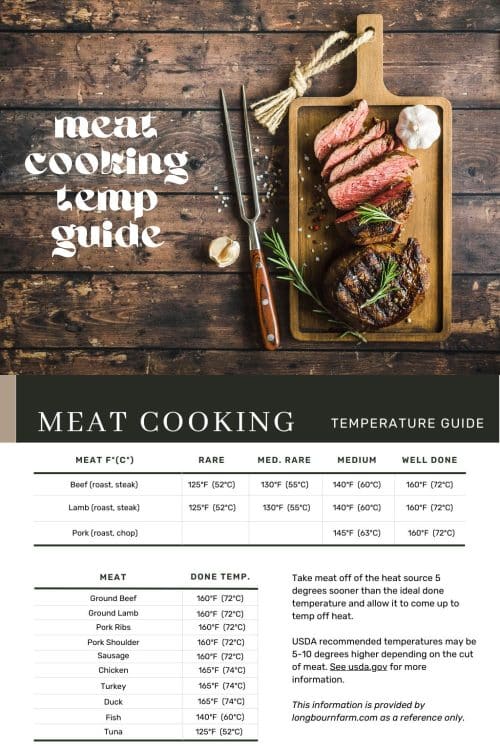
Fish Temperature
Let’s talk fish. There are so many varieties of fish out there, but the general rule of thumb for measuring fish temperature is 140°F. The 140°F fish temperature is recommended for salmon, cod, and other similar fish.
However, tuna and swordfish steaks can be cooked until 125°F. These types of fish can be treated similarly to beef, with their level of doneness directly lined to the cooked fish temperature.
Lamb Temperature
You can treat lamb exactly the same as you would beef. If you’re cooking up a lovely lamb roast or some lamb steaks – follow my printable meat temperature chart and stop cooking when it hits the correct lamb temperature.
But don’t forget; ground meat must always be cooked thoroughly. For ground lamb, the cooked lamb temperature should be 160°F.
Turkey Temperature
Finally, what is the best temperature for cooked turkey? You should cook turkey to an internal temperature of 165°F. Like chicken, a whole turkey has a hollow cavity that could contain bacteria – so you need to make sure the entire turkey is cooked through.
You can also remove this festive favorite from the oven when the turkey temperature reaches 160°F. Then cover it with foil, let it rest, and the turkey temperature will rise to 165°F by itself! Yummy, flavorful, and safely cooked turkey – what more could you want?
Meat Temperatures When Reheating
No matter what meat you’re reheating, it must reach an internal cooked temperature of 165°F. Bacteria multiplies quickly at room temperature, so you need to make sure that any reheated meat reaches a safe temperature.
Whether you’re using the grill, oven, or microwave to reheat – using a digital meat thermometer is the best way to get an accurate reading of your meat temperatures.
The Importance of Cooked Meat Temperatures
So remember, the temperature of your meat matters! Cooking to the right temperature ensures that whatever meat you’re cooking is safe to eat. Use my meat temperature chart printable as a reference, and take the guesswork out of it altogether by investing in a meat thermometer!
More details on Meat Temperatures
If you are interested in the more technical side of meat science, Mom at the Meat Counter is a fantastic resource for more information. It is a blog written by the awesome Janeal who has a Ph.D. in Meat Science. Here are some links that relate specifically to this post:
- Safety in Knowledge {Food safety information}
- How would you like that cooked? {More information on meat temperatures with cool visual aid pictures}
- Meat color is a-changin’! {Why meat is a certain color and what that means}
- Don’t judge cooked meat by it’s color {Why that isn’t as safe as taking meat temperatures}
More favorites from Longbourn Farm
- 5 Best Steak Knives
- Easy Steak Seasoning Recipe
- How to Reverse Sear Steak
- How to Cook Steak in a Pan
- How to Grill Steak
- Steak Seasoning
- How Long Does Steak Last in the Freezer
- Herb Steak Butter
- Grilled T-Bone Steak
- Blue Cheese Steak Salad with Balsamic Dressing
- Chopped Steak Salad
- Grilled Flank Steak
- Garlic Herb Kabobs
- Leftover Steak Tacos
- Dijon Peppercorn Steak
- Sheet Pan Steak Fajitas
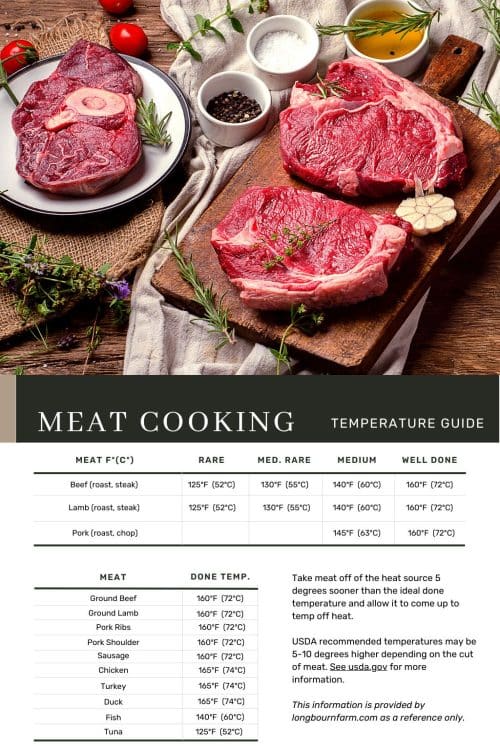
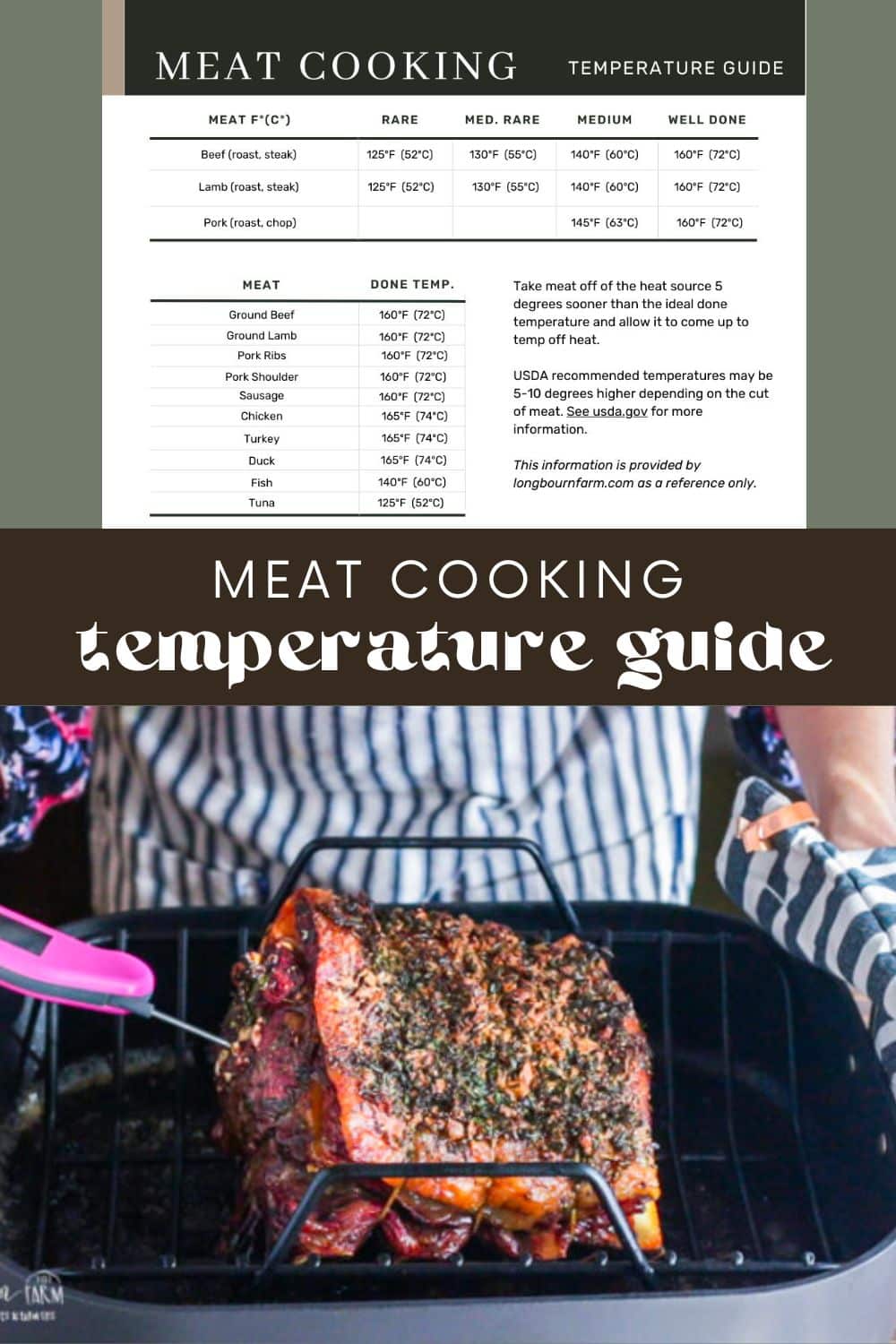
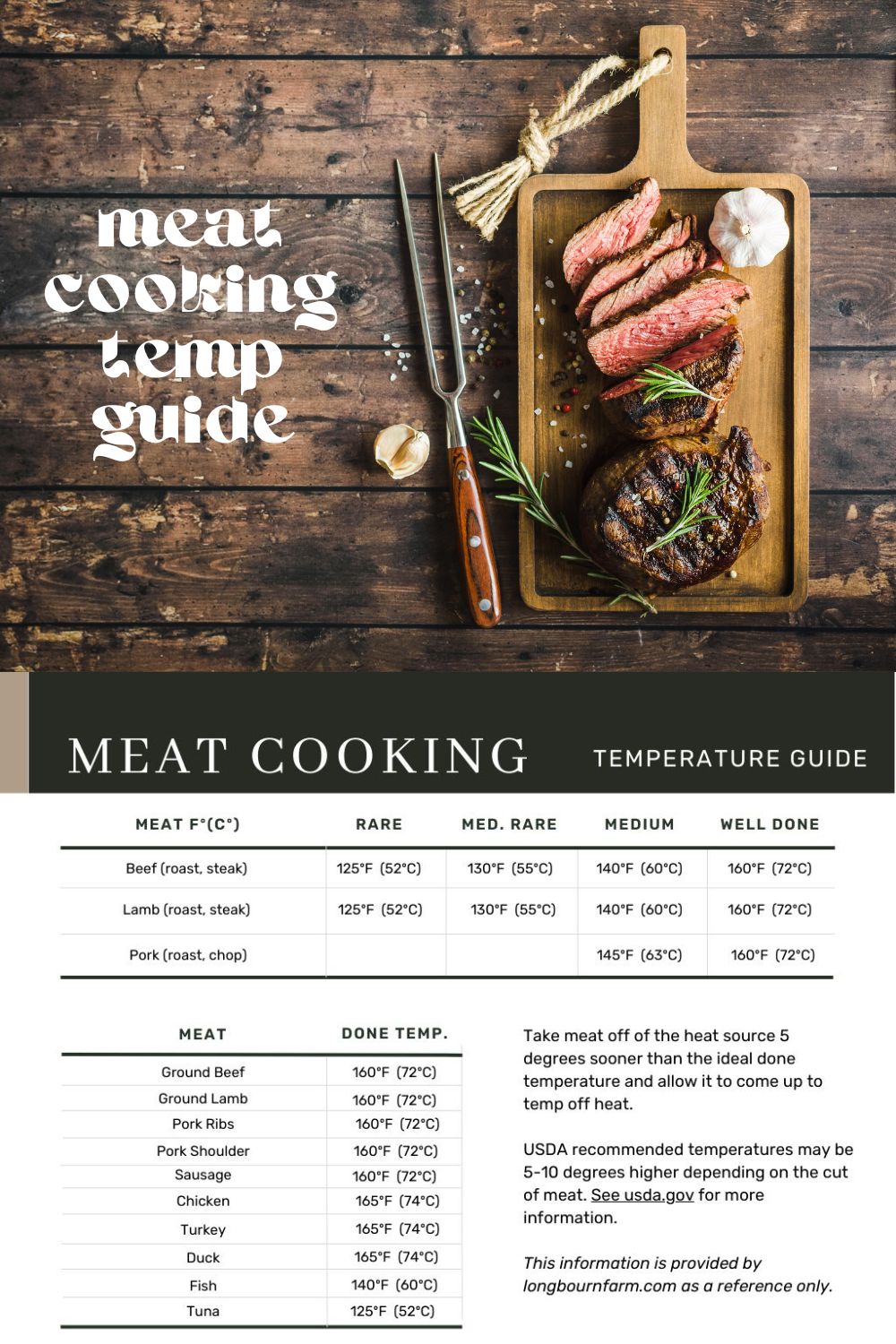
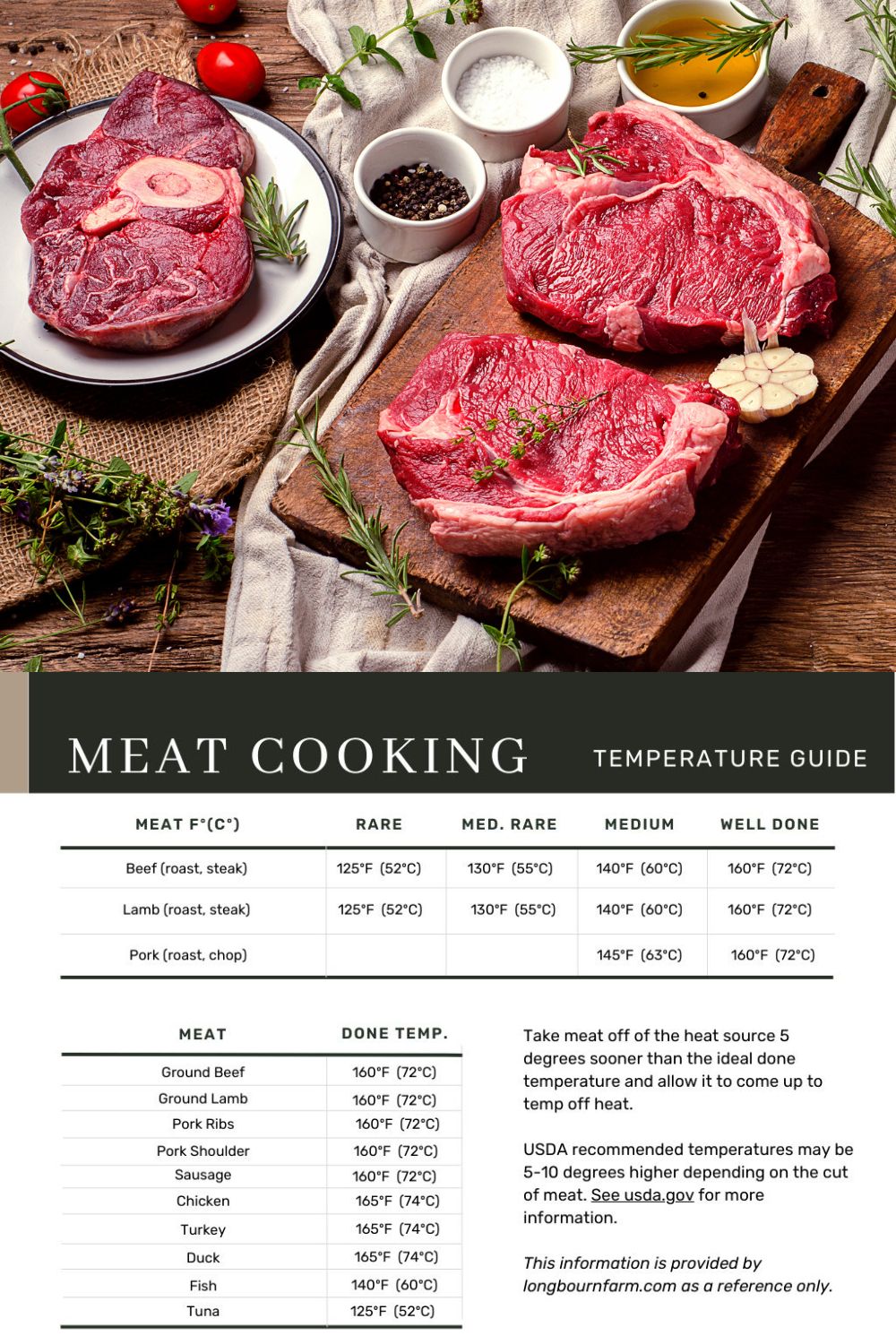
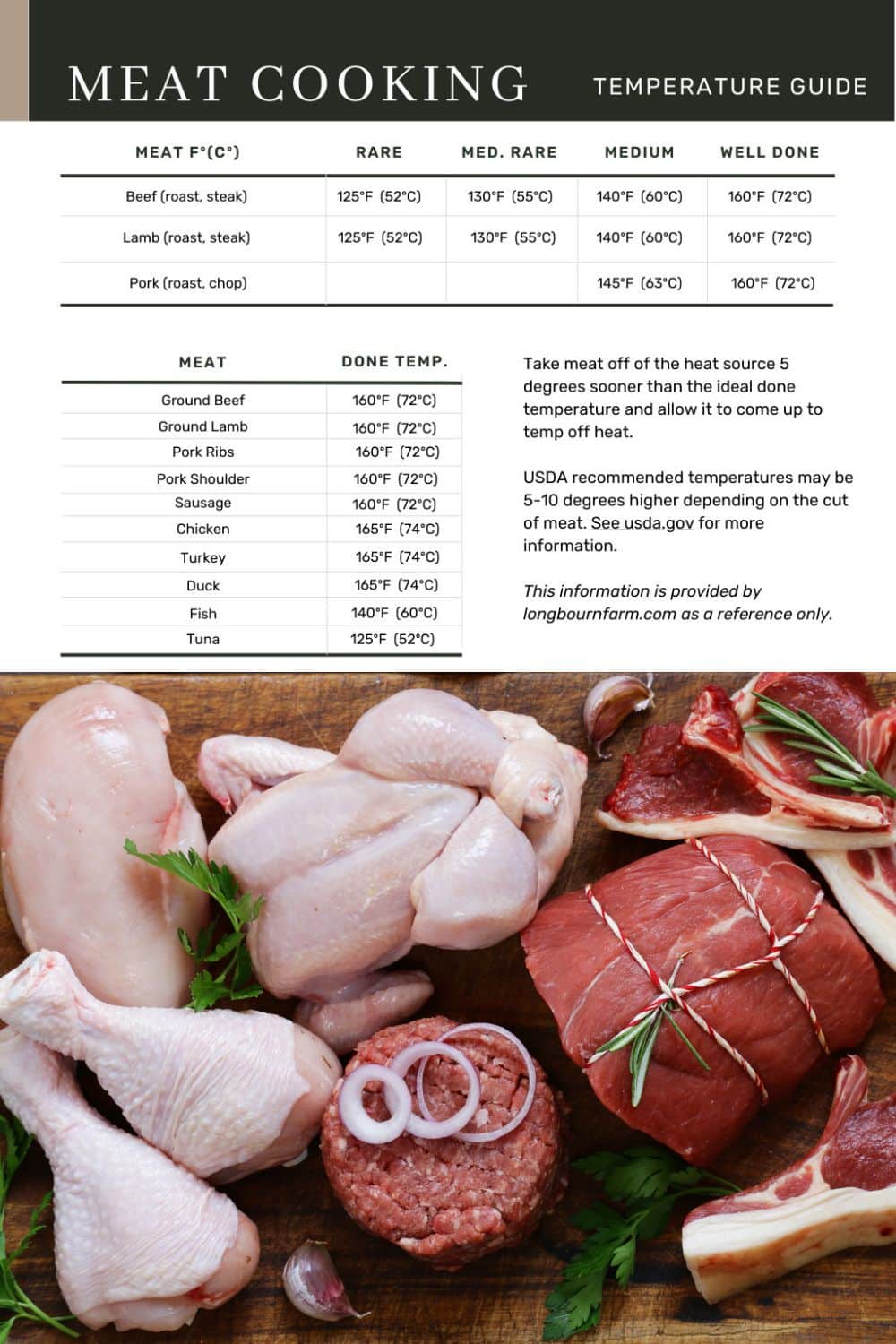


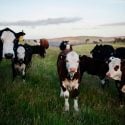


[…] For more info see this guide on meat temperatures. […]